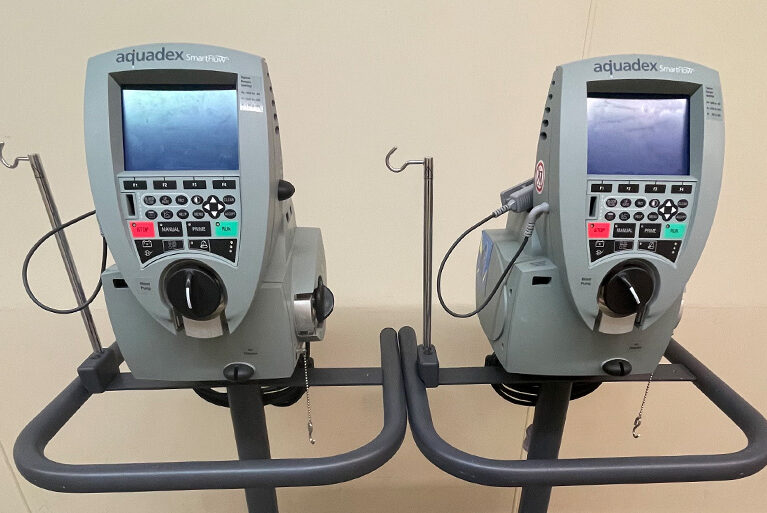
Acute kidney injury (AKI) remains a significant cause of morbidity in the NICU. Infants may need urgent kidney care due to:
- Prematurity
- Heart complications
- Birth defects
- Pulmonary hypertension
Babies with renal failure, acute injury, or fluid retention not alleviated with diuretics benefit from dialysis. However, few dialysis machines are designed to work on patients as small as those in the NICU.
UVA Health Children’s NICU’s aquapheresis team has overcome this barrier through adapted continuous renal replacement therapy (CRRT). The team includes neonatologist Jonathan Swanson, MD, as well as Ayah Elmaghrabi, MD, Jennifer Charlton, MD, and Agnes Swiatecka-Urban MD, pediatric nephrologists with UVA Health Children’s. Swanson and Charlton are also founding members of the Neonatal Kidney Collaborative.
Continuous Renal Replacement Therapy (CRRT) vs Other Modalities for Acute Kidney Injury (AKI) in Neonates
Critically ill neonates often develop acute kidney injury (AKI) with fluid overload, necessitating dialysis for recovery. Traditional dialysis modalities, such as peritoneal dialysis and hemodialysis, have limitations. Peritoneal dialysis is associated with suboptimal fluid management, while hemodialysis can cause rapid shifts in fluid balance, potentially leading to hemodynamic instability.
In contrast, CRRT offers a more gradual and controlled approach to managing AKI and fluid overload. CRRT can also be more precise, one of the most important words in any high-performing NICU.
Despite these benefits, CRRT is still used infrequently in the NICU. Often, its use is restricted to neonates with advanced kidney injury or severe fluid overload. Infants with moderate illness are left waiting because the risk of therapy outweighs the risk of their current illness.
But, by reducing the risk of CRRT, more infants can be treated and avoid potential complications later.
Modifying the CRRT for Neonates
Recent advancements in CRRT technology have led to the adaptation of the aquapheresis machine, which features a small circuit volume as low as 33 ml.
When paired with smaller dialysis catheters, this innovation significantly reduces the risks associated with therapy and improves patient outcomes. These technological advancements enable the safe and effective use of CRRT in smaller infants, providing specialized kidney support in the NICU.
Continued Technological Advancements
UVA Health Children’s NICU team’s commitment to improving patient care means we're at the forefront of innovation. From advanced big data uses to adapting dialysis machines for ultrafiltration suitable for small infants, Swanson confirms that part of the NICU’s goals are to “bring the newest and most effective technologies to premature and sick infants.”
Opportunities like this one allow for a higher standard of care, providing better short-term and long-term outcomes.